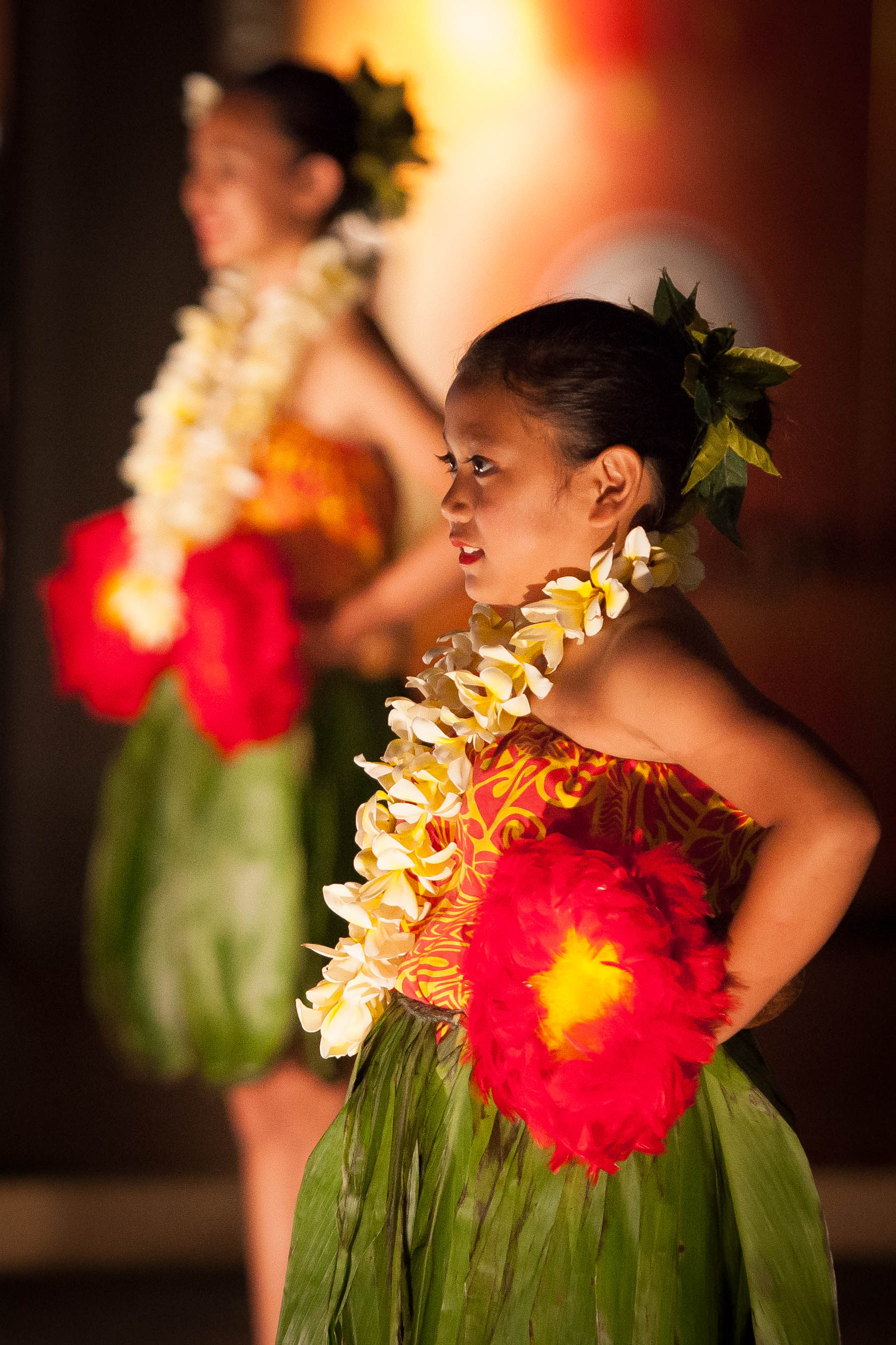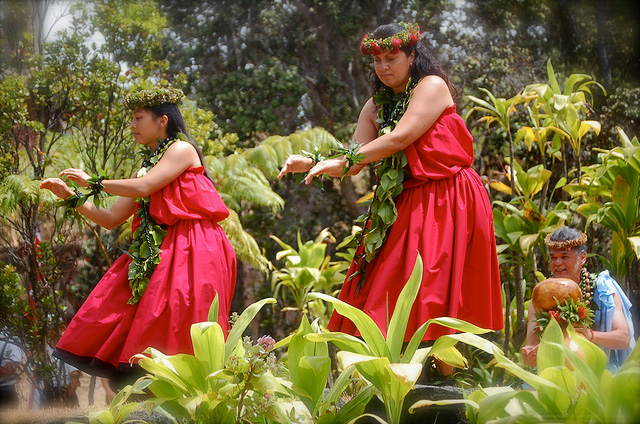Hula; photo by MitchellShapiroPhotography on Flickr (noncommercial use permitted with attribution / no derivative works).
Official State Dance of Hawaii
Hawaii designated the hula as the official state dance in 1999. All State Dances
The hula is a traditional dance form with complex hand and body movements accompanied by chant, song, traditional musical instruments such as the pahu (and more modern instruments like the ukulele).
The History of the Hula
The Hula has a long and rich history that dates back to ancient Hawaii. It was initially performed as a means of storytelling and entertainment. The dance was often accompanied by chants and songs, which conveyed the stories of the Hawaiian people and their connection to the land and nature.
In the 19th century between 1830 and 1874, it was illegal to perform hula in public places. However, the dance persisted and eventually underwent a revival in the early 20th century, thanks in part to the efforts of Hawaiian musicians and dancers who sought to preserve their cultural heritage.
The Significance of the Hula
The Hula is more than just a form of entertainment; it is an integral part of Hawaiian culture and identity. The dance embodies the values and traditions of the Hawaiian people, such as respect for nature, love, and spirituality. The Hula is also a way of honoring the ancestors and their legacy, as many of the dances are based on stories and legends that have been passed down through generations.
Moreover, the Hula is a way of expressing oneself and connecting with others. The dance requires a deep understanding of the music, lyrics, and gestures, as well as the ability to convey emotions and tell a story through movement. It is a collaborative and inclusive art form that encourages community and connection.
The Beauty of the Hula
The Hula is a breathtakingly beautiful dance that captivates audiences with its grace, fluidity, and expression. The dancers wear colorful costumes and leis, and move in sync with the music, creating a mesmerizing visual and auditory experience.
One of the unique features of the Hula is the use of hand gestures, known as "kaha ki'i." These gestures are used to convey specific meanings, such as the movement of waves, the blooming of a flower, or the fluttering of a bird's wings. The gestures add depth and nuance to the dance, allowing the dancers to tell complex stories and convey a range of emotions.
The Hula Today
Today, the Hula continues to be an important part of Hawaiian culture and identity. It is taught in schools and community centers, and performed at festivals and events throughout the state. The dance has also gained recognition and popularity around the world, with Hula schools and troupes in countries such as Japan, Australia, and the United States.
The Hula is more than just a dance; it is a symbol of Hawaiian culture, history, and identity. It embodies the values and traditions of the Hawaiian people and serves as a way of connecting with others and expressing oneself. Whether you're a resident of Hawaii or a visitor to the state, experiencing the beauty and magic of the Hula is a must-do activity.


